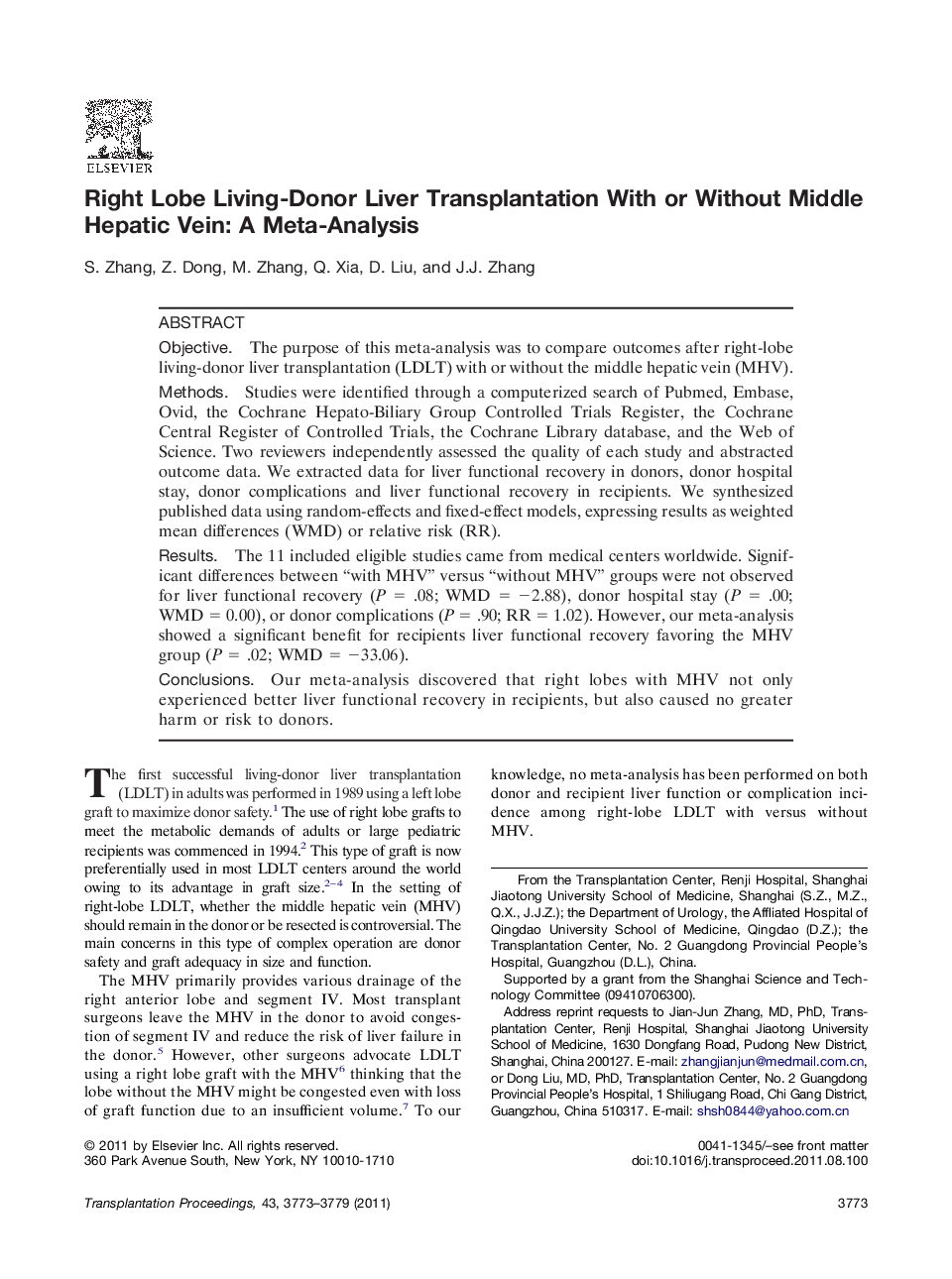| Article ID | Journal | Published Year | Pages | File Type |
|---|---|---|---|---|
| 6248971 | Transplantation Proceedings | 2011 | 7 Pages |
ObjectiveThe purpose of this meta-analysis was to compare outcomes after right-lobe living-donor liver transplantation (LDLT) with or without the middle hepatic vein (MHV).MethodsStudies were identified through a computerized search of Pubmed, Embase, Ovid, the Cochrane Hepato-Biliary Group Controlled Trials Register, the Cochrane Central Register of Controlled Trials, the Cochrane Library database, and the Web of Science. Two reviewers independently assessed the quality of each study and abstracted outcome data. We extracted data for liver functional recovery in donors, donor hospital stay, donor complications and liver functional recovery in recipients. We synthesized published data using random-effects and fixed-effect models, expressing results as weighted mean differences (WMD) or relative risk (RR).ResultsThe 11 included eligible studies came from medical centers worldwide. Significant differences between “with MHV” versus “without MHV” groups were not observed for liver functional recovery (P = .08; WMD = â2.88), donor hospital stay (P = .00; WMD = 0.00), or donor complications (P = .90; RR = 1.02). However, our meta-analysis showed a significant benefit for recipients liver functional recovery favoring the MHV group (P = .02; WMD = â33.06).ConclusionsOur meta-analysis discovered that right lobes with MHV not only experienced better liver functional recovery in recipients, but also caused no greater harm or risk to donors.
